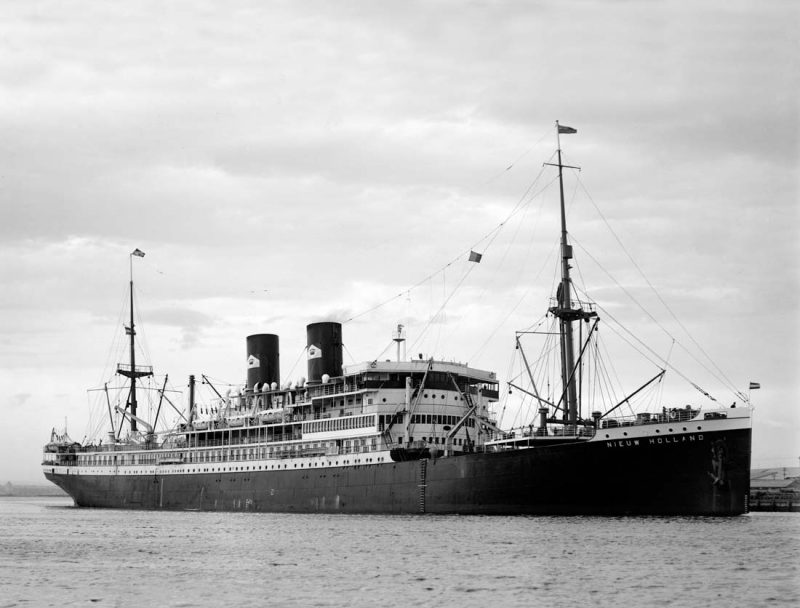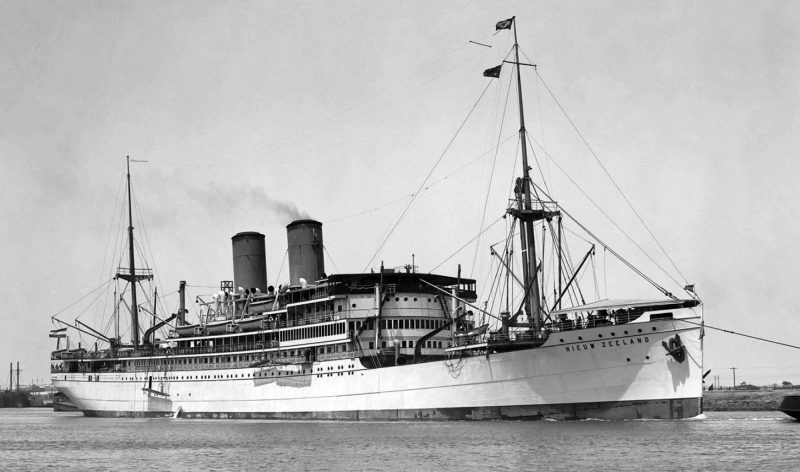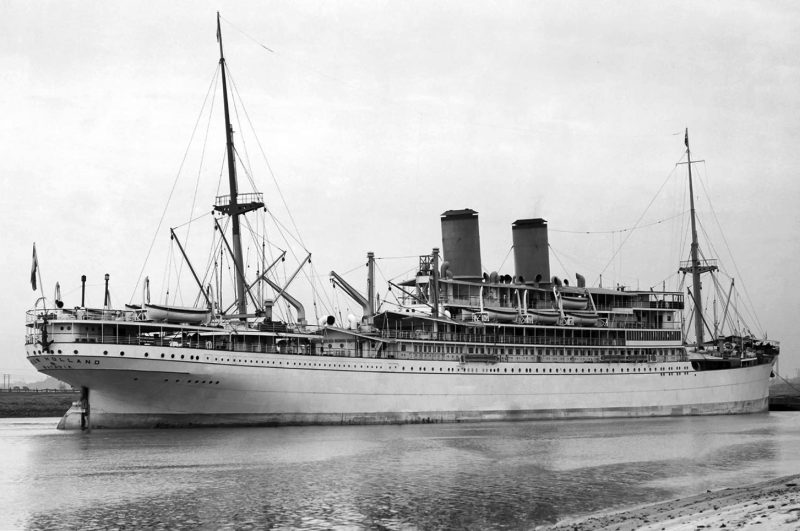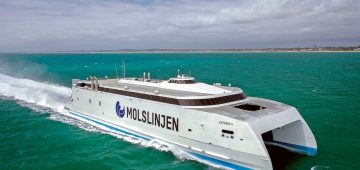
Dutch control of what is now Indonesia began in 1595 with the establishment of the Dutch East Indies Company (VOC), and two centuries later the islands previously dominated by the VOC were taken under the Dutch Government colonial umbrella. Java became the focus of Dutch control from a capital at Batavia (later Djakarta), and the five million Javan population of that time formed a relatively stable community in the Dutch colony. In 1888, the Koninklijke Paketvaart Maats (K.P.M.) or the Royal Paket Navigation Company was established to link all of the many islands and ports of the Dutch East Indies.
K.P.M. had a huge fleet of one hundred steamers, stern wheelers and small motor coasters in 1920, and had almost forty services from Singapore and Java to all of the Dutch East Indies as well as to South China, Burma, Thailand, Mauritius and to East and South Africa.
The majority of this huge fleet of passenger and cargo vessels were under 3,000 grt, but two larger flagships were ordered from well known shipyards in Amsterdam and Rotterdam for completion in 1928 as Nieuw Holland and Nieuw Zeeland for the important Java-Australia Line.
Another Dutch shipping company, the Java China Japan Line (J.C.J.L.) formed in 1903, worked in conjunction with the K.P.M. and after World War II years formed a merger group of these two big Dutch fleets.

The Dutch East Indies
The Dutch successfully ruled the Dutch East Indies for 350 years, but as with the British Raj in India, the ruling countries committed some appalling atrocities. The sprawling Dutch East Indies archipelago was home to hundreds of disparate ethnic groups, with only two main tribes, one in the west on Sumatra and one in the east in the small groups of islands.

The Dutch with considerable effort managed to unite a small portion of this region under a single jurisdiction. Dutch colonialism played a key role in clearing the way for Indonesian independence by destroying or crippling the many indigenous tribes that would have formed a basis for several nations in their own right.
During the long slow conquest of the area, the Dutch confronted and defeated one tribe after another e.g. the Sea Warriors of Ternate and Tibore, the Banda tribe were completely exterminated after opposing the planting of nutmegs, the Muslims of Aceh on Sumatra were defeated after thirty years of bloody war that lasted until World War I, the Mataram tribe of Java had been massacred in the 1850s, and the Kalimantan (Borneo) forest tribes could not offer much opposition and were quickly overrun.

The Muslims of the Dutch East Indies naturally resented being ruled by a Christian country, and the celebration in 1915 in Batavia of the centenary of the liberation of Holland from Napoleonic rule deeply offended many in the archipelago, and stiffened resistance. The National Youth Congress of 1928 formally adopted a new Indonesian flag, language and anthem in preparation for their eventual independence. The turbulent politics of the 1930s and 1940s in the archipelago was at odds with what the Dutch thought of as ‘a golden era of colonial rule’.
The eventual first President of Indonesia, Sukarno, was imprisoned in the 1930s for leading a policy of non co-operation with Dutch rule, after armed rebellions had failed in 1926/27.
The means of how to achieve independence from the Dutch taxed the brains of many opposition leaders and the population of the archipelago for several decades until full independence was at last won in the last days of 1949.
Subscribe today to read the full article!
Simply click below to subscribe and not only read the full article instantly, but gain unparalleled access to the specialist magazine for shipping enthusiasts.






Comments
Sorry, comments are closed for this item